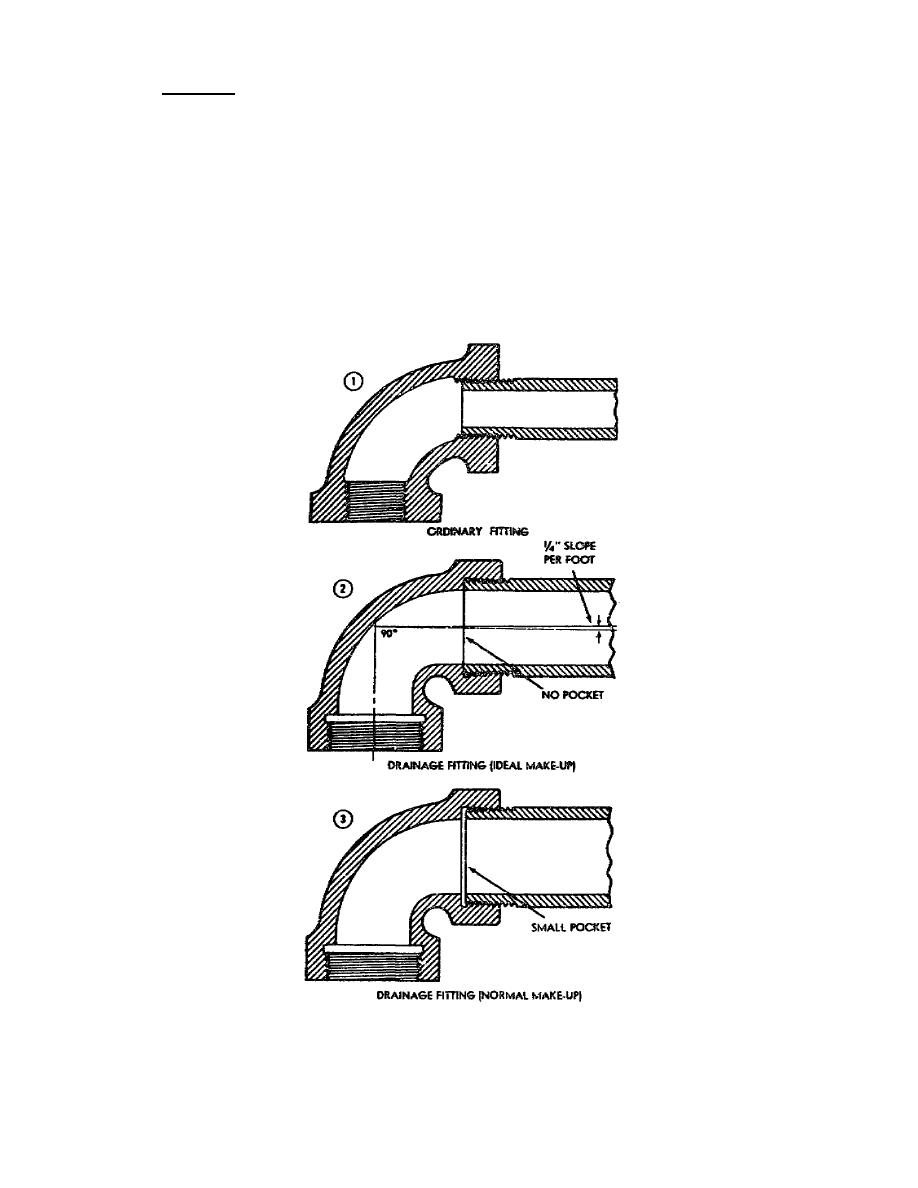
b. Fittings.
Fittings used on either wrought iron or steel pipe are
generally made of malleable (capable of being shaped by beating) or cast iron.
to produce malleable iron. This iron can be bent or pounded to some extent without
breaking.
Iron pipe fittings are of two general types: ordinary or pressure
fig 1) differ from ordinary fittings (1, fig 1) in several ways: the insides are
smooth and shaped for easy flow, shoulders are recessed so that when pipes are
screwed in they fill the recess and form an unbroken internal contour and they are
designed so that horizontal lines entering them will have a slope of 1/4 inch per
foot.
In an ideal drainage fitting the pipe fills the recess completely (2, fig
1), and there is no pocket where foreign matter may be caught and block the flow.
This condition is rarely achieved and the made-up joint resembles 3, figure 1.
Only drainage fittings should be used on soil and waste lines. Either ordinary or
drainage fittings may be used for gas, air, vent, water, or steam systems.
Figure 1.
Difference between ordinary and drainage fittings.
54



 Previous Page
Previous Page
